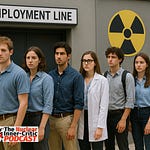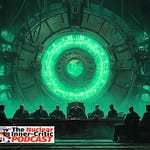Executive Summary
The cancellation of NuScale's first commercial small modular reactor project is a setback but not the end for advanced nuclear. This TL:DR summarizes key takeaways:
TL:DR
Project canceled due to cost overruns and lack of customers
Faced first-mover challenges but progressed SMR development
Key lessons around cost control and attracting customers
Other SMR projects continue to move forward
Future can focus on design optimization, policy support
Too soon to declare the demise of next-gen nuclear.
Sometimes Failure Precedes Future Success
The recent cancellation of NuScale's first-of-a-kind small modular reactor project was disappointing news to many advanced nuclear supporters.
The Utah Associated Municipal Power Systems (UAMPS) pulled out of the Carbon Free Power Project due to substantial cost overruns from the original $55/MWh target to over $90/MWh. The lack of customer subscriptions was also a death blow, as too few utilities were willing to purchase power from the untested design.
The Agony and Ecstasy of Being First
As the first commercial SMR project, NuScale's effort suffered from high first-of-a-kind engineering and regulatory costs. NuScale's design compromises, like using a single control room for 12 reactors, likely also contributed to the demise.
However, as an advanced reactor pioneer, NuScale succeeded in gaining the first SMR design certification (including questions on the steam generators) in the US and progressed in manufacturing readiness.
Every Setback Offers an Opportunity to Grow
This project cancellation provides valuable lessons that can inform future SMR deployments. Controlling costs through standardized manufacturing and optimized construction is critical to make SMRs attractive to customers. Developing a strong value proposition around SMR benefits is also important to create customer pull. The Department of Energy can continue supporting technical assistance and cost-sharing.
Vigilance, Resilience & Tenacity Will Win Out
While anti-nuclear groups declare victory, it's entirely premature to call this the end for advanced reactors. Other companies continue maturing SMR plans and designs. Utilities still see SMRs playing a significant role in their clean energy transition. With the right policies, innovation, and learning from experience, next-generation nuclear can still contribute to a carbon-free energy system.
NuScale's design compromises likely contributed to the project's demise. Using a single control room for 12 reactor units failed to meet NRC's own guidance of one control room for every two units. This redundancy is important for ensuring safe operation.
Another safety issue brought up by organizations like the Union of Concerned Scientists related to NewScale's lack of leak-tight containment structures. While the company succeeded in gaining NRC design approval, such shortcuts may have undermined the economics and safety case.
As an advanced reactor company founded in 2007, NuScale deserves credit for getting the first SMR design certified in the US. Their pioneering efforts advanced manufacturing readiness and supply chain development for SMRs.
But as a first mover, NuScale also incurred high costs associated with first-of-a-kind engineering and navigating the untested waters of commercializing a new nuclear reactor design. Future followers can learn from and improve on their trailblazing.
Since NuScale's design approval, other companies have continued maturing their SMR plans and designs. X-energy and TerraPower are developing different SMR concepts and have projects planned. Holtec is considering placing its SMR design at decommissioned plant sites.
The Department of Energy remains committed to advanced nuclear technology as a critical carbon-free energy solution. Utilities like Duke Energy still see SMRs playing a significant role in their future clean energy transition.
Rather than dwell on this single failure, the nuclear industry must focus on the future while bringing the key lessons of NuScale’s experience forward. “Managing Cost” is always low-hanging fruit in hindsight. However, SMR manufacturers should look for opportunities to harmonize design and fabrication strategies and resources where possible, while managing costs through standardized manufacturing and optimized construction when those opportunities present themselves.
Driving down costs will naturally make SMRs more attractive to potential customers. Developing a strong value proposition around load following, siting flexibility, and passive safety features is also important to create customer pull.
Future SMR projects may also benefit from recent policy support like the Inflation Reduction Act nuclear production tax credits. The DOE can continue supporting technical assistance and cost-sharing to derisk first movers. Emerging markets like hydrogen production or heavy industry decarbonization may offer new customer segments.
While anti-nuclear groups declare victory, it's premature to call this the end for advanced reactors. The legacy "No Nukes" movement cheers every nuclear setback, but the industry’s demise has been wrongly predicted before.
Just as the nuclear industry learned from early technology difficulties, we must learn from NuScale's experience. With continuing innovation and the right policy environment, next-generation nuclear can still play a role in a carbon-free energy mix.














Share this post